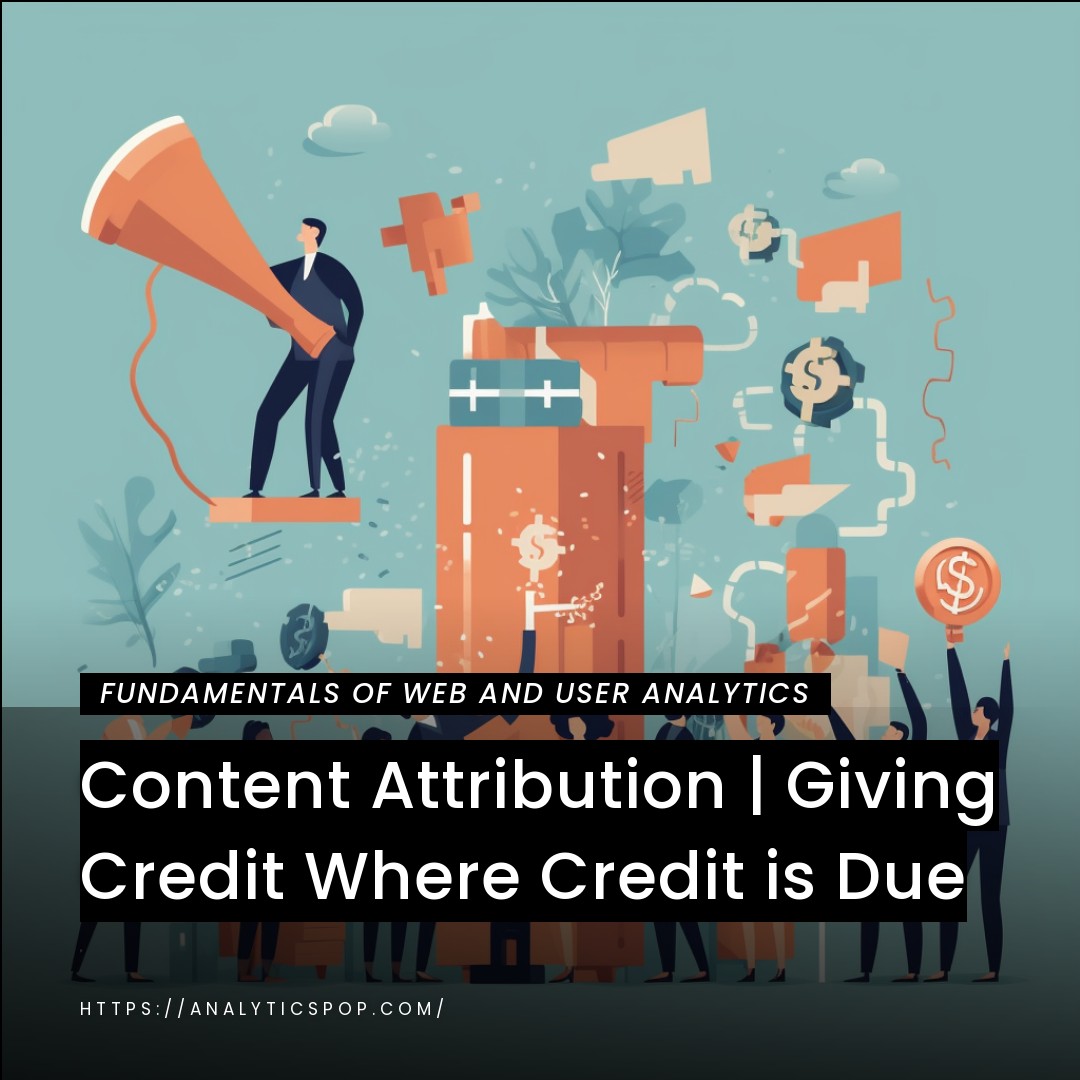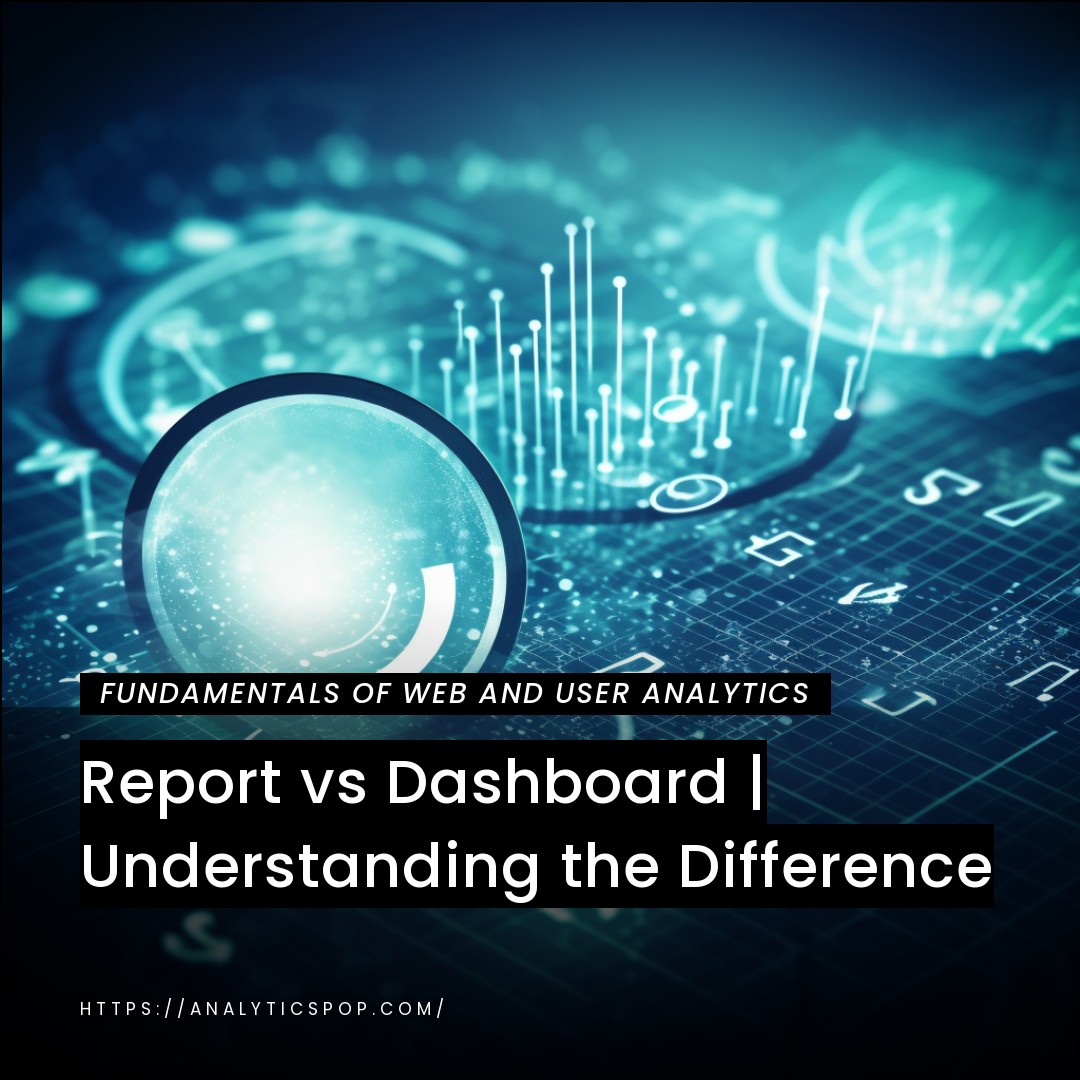Have you ever stumbled upon a great blog post or article, only to find that the content was plagiarized?
It’s frustrating to see your hard work being stolen and shared without proper credit. Content attribution is essential in the world of online content creation.
Not only is content attribution ethical, but it’s also legally required. Copyright laws protect creators, and failing to properly attribute content can result in legal action. Additionally, giving credit where credit is due can build relationships and trust with other content creators.
In this article, we’ll discuss the importance of content attribution, different types of attribution, and best practices for properly attributing content.
Understanding Content Attribution
Content attribution refers to the process of assigning credit to the various elements that contribute to the success of a piece of content. This includes identifying which channels, campaigns, and touchpoints led users to engage with and consume the content.
By understanding content attribution, businesses can gain insight into the most effective channels and strategies for reaching their target audience. For example, suppose a piece of content receives significant traffic from a particular social media platform. In that case, businesses can use this information to focus their social media marketing efforts on that platform.
In addition, understanding content attribution can help businesses optimize their content creation process. By identifying the types of content that are most effective at driving engagement and conversions, businesses can create more targeted and impactful content that resonates with their audience.
What is content attribution?
Content attribution is the process of determining and assigning credit to the various elements that contribute to the success of a piece of content. This involves identifying the specific channels, campaigns, and touchpoints that lead users to engage with and consume the content.
By understanding content attribution, businesses can gain valuable insights into which marketing channels and strategies are most effective at driving engagement and conversions. For example, suppose a piece of content receives significant traffic from a particular social media platform. In that case, businesses can use this information to focus their social media marketing efforts on that platform.
Content attribution can also help businesses optimize their content creation process by identifying the types of content that are most effective at driving engagement and conversions. This enables businesses to create more targeted and impactful content that resonates with their audience and drives better results.
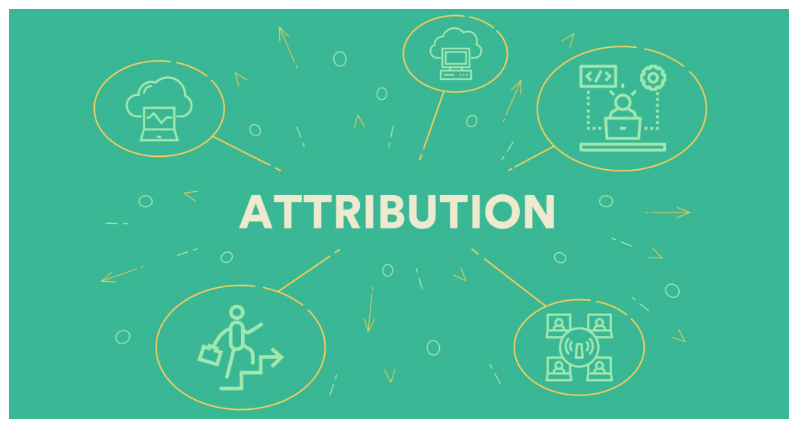
How does content attribution work?
Content attribution tracks and analyzes user behavior across multiple touchpoints, channels, and campaigns. This involves using analytics tools such as Google Analytics, Adobe Analytics, or other attribution software to track user interactions with a piece of content and identify the specific touchpoints that led to a conversion.
Content attribution typically involves multi-touch attribution models, which assign credit to multiple touchpoints along the user’s journey. This allows businesses to gain a more comprehensive understanding of the various touchpoints that contribute to the success of a piece of content rather than attributing all the credit to a single touchpoint.
Several multi-touch attribution models exist, including linear attribution, time decay attribution, and algorithmic attribution. Each model assigns credit to touchpoints differently based on the user’s behavior and the business’s goals.
Content attribution gives businesses valuable insights into which touchpoints and channels are most effective at driving engagement and conversions. This enables companies to optimize their marketing strategies and create more targeted and impactful content that resonates with their audience.
Benefits and drawbacks of content attribution
Content attribution has several advantages and drawbacks that businesses should be aware of when implementing a content attribution strategy.
Benefits of content attribution:
- Understanding what works: Content attribution gives businesses insights into which channels, campaigns, and touchpoints are most effective at driving engagement and conversions. This enables companies to optimize their marketing strategies and create more targeted and impactful content that resonates with their audience.
- Improved ROI: By identifying the most influential touchpoints and channels, businesses can focus their marketing efforts and resources on the strategies that deliver the best results. This can result in a higher return on investment (ROI) for their marketing efforts.
- Data-driven decision-making: Content attribution gives businesses data-driven insights into their marketing performance, which can inform their decision-making processes and improve their overall marketing strategy.
Drawbacks of content attribution:
- Complex and time-consuming: Implementing a content attribution strategy can be difficult and time-consuming, especially for businesses with large amounts of data or multiple touchpoints. Setting up and maintaining an effective attribution system requires a significant investment of time and resources.
- Attribution bias: Attribution bias can occur when businesses assign credit to touchpoints that may not have played a significant role in the user’s journey. This can result in inaccurate data and misguided decision-making.
- Limited view: Content attribution only provides insights into the channels and touchpoints that are being tracked. It may not account for factors outside the business’s control, such as changes in consumer behavior or external market factors.
Content attribution can be a powerful tool for businesses looking to optimize their marketing strategies and improve their ROI. However, it requires careful consideration and a data-driven approach to avoid attribution bias’s potential drawbacks and inaccuracies.
Key components of content attribution
The key components of content attribution typically include the following:
- Touchpoints: Touchpoints refer to the various channels and campaigns a user interacts with while consuming content. These touchpoints include social media, email marketing, search engines, and other marketing channels.
- Attribution models: Attribution models refer to the rules and algorithms used to assign credit to touch points along the user’s journey. There are various types of attribution models, including linear attribution, time decay attribution, and algorithmic attribution.
- Conversion goals: Conversion goals are the specific actions a business wants the user to take after consuming the content. This could include purchasing, filling out a form, or subscribing to a newsletter.
- Analytics tools: Analytics tools, such as Google Analytics or Adobe Analytics, track user behavior and gather data on touchpoints, attribution models, and conversion goals. These tools provide businesses with the data to implement an effective content attribution strategy.
- Data analysis: Data analysis analyzes data collected from analytics tools to gain insights into user behavior, touchpoints, and attribution models. This analysis can inform business decisions and help optimize marketing strategies.
By understanding and utilizing these key components of content attribution, businesses can gain valuable insights into which touchpoints and channels are most effective at driving engagement and conversions. This enables companies to optimize their marketing strategies and create more targeted and impactful content that resonates with their audience.
Why Is Content Attribution Important?
Content attribution is essential for several reasons.
- Firstly, it allows businesses to identify the most effective channels and touchpoints to drive engagement and conversions. By understanding which media and campaigns drive the most traffic and conversions, companies can optimize their marketing efforts and focus on the strategies that deliver the best results.
- Content attribution gives businesses valuable insights into their audience’s behavior and preferences. By analyzing user behavior across multiple touchpoints, companies can better understand their audience’s needs and preferences, which can inform content creation and marketing strategies.
- Thirdly, content attribution helps businesses measure the effectiveness of their marketing efforts and calculate their return on investment (ROI). By tracking user behavior and assigning credit to touchpoints, companies can measure the impact of their marketing efforts and adjust their strategies accordingly.
- Finally, content attribution can help businesses improve their content creation process by identifying the types of content that are most effective at driving engagement and conversions. This enables businesses to create more targeted and impactful content that resonates with their audience and delivers better results.
Content attribution is crucial because it enables businesses to optimize their marketing strategies, understand their audience, measure their marketing performance, and create more compelling content.
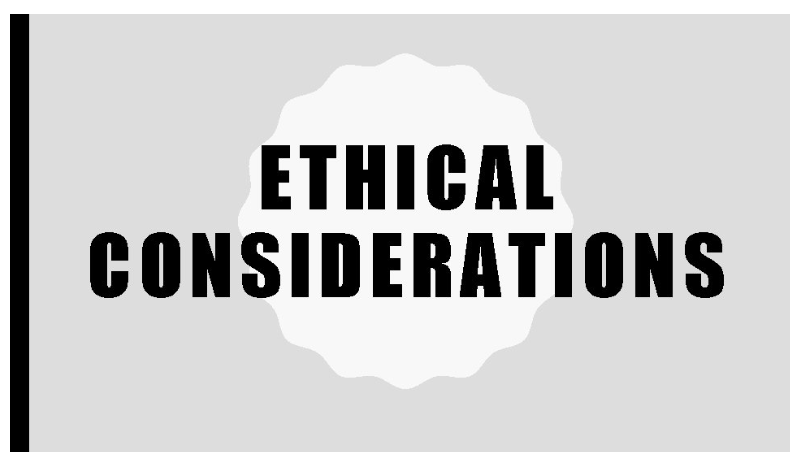
Ethical considerations
There are several ethical considerations that businesses should be aware of when implementing a content attribution strategy. These include:
- Transparency: Businesses should be transparent with their audience about the data they are collecting and how it will be used. This includes disclosing the types of collected data, how it will be analyzed, and how it will be used to improve its marketing strategies.
- Privacy: Businesses should take appropriate measures to protect user data and ensure it is not misused or shared without consent. This includes complying with relevant privacy laws and regulations, such as GDPR and CCPA.
- Attribution bias: Attribution bias can occur when businesses assign credit to touchpoints that may not have played a significant role in the user’s journey. This can result in inaccurate data and misguided decision-making. To avoid this, businesses should use a data-driven attribution approach and carefully consider each touchpoint’s impact on the user’s journey.
- Data security: Businesses should take appropriate measures to protect the data they collect and ensure it is stored securely. This includes using secure servers and encryption methods to protect user data from unauthorized access or theft.
When implementing a content attribution strategy, businesses should prioritize transparency, privacy, and data security. By doing so, they can ensure that their marketing strategies are ethical, responsible, and respectful of user privacy.
Avoiding plagiarism
Avoiding plagiarism is essential for anyone creating content, whether for personal or business use. Plagiarism is using someone else’s words, ideas, or work without proper attribution or permission.
To avoid plagiarism, it is essential to correctly attribute any quotes, pictures, or data that you use in your content. This can be done by including citations, references, or links to the original source of information.
In addition to citing sources, it is essential to create original content that is not simply a copy of someone else’s work. This means taking the time to research and write content in your own words, using your voice and perspective.
There are also several tools available that can help you avoid plagiarism, such as plagiarism checkers that can scan your content for potential instances of plagiarism. These tools can help you identify areas where you may have inadvertently used someone else’s work without proper attribution.
Avoiding plagiarism is essential for maintaining the integrity of your content and ensuring that you are not infringing on the intellectual property rights of others. You can create high-quality, ethical, and compelling content by properly attributing sources and creating original content.
Building trust and credibility
Building trust and credibility is essential for businesses looking to establish themselves as industry leaders and attract and retain customers. Companies can build trust and credibility with their audience in several ways:
- Consistency: Businesses should strive to be consistent in their messaging and branding across all channels and touchpoints. This consistency helps establish a sense of trust and reliability with the audience.
- Transparency: Being transparent about business practices, policies, and values can help build trust with the audience. This includes being open and honest about any mistakes or issues and taking steps to address them promptly and effectively.
- Expertise: Demonstrating expertise and knowledge in your industry can help build credibility with your audience. This can be achieved through content creation, speaking engagements, or other thought leadership opportunities.
- Social proof: Social proof, such as customer reviews, testimonials, and case studies, can help build trust with the audience by demonstrating the effectiveness and value of your products or services.
- Customer service: Providing excellent customer service can help build trust and loyalty with your audience. This includes responding promptly to inquiries and complaints and going above and beyond to meet customer needs.
Building trust and credibility requires transparency, consistency, expertise, social proof, and excellent customer service. By focusing on these areas, businesses can establish themselves as trustworthy and credible industry leaders that customers can rely on.

Legal implications of not giving proper attribution
Not giving proper attribution can have legal implications, particularly in cases where the original work is protected by copyright law. Copyright law protects the original works of authors, including literary, artistic, and musical works, as well as software, databases, and other types of intellectual property.
Using someone else’s work without proper attribution or permission may infringe on their copyright, resulting in legal action. The copyright owner may sue for damages, seek an injunction to stop the unauthorized use of their work, or request that the content be removed from the internet.
In addition to copyright law, there are also other legal implications to consider when not giving proper attribution. For example, using someone else’s work without permission or attribution may violate trademark or unfair competition laws. These laws protect the intellectual property rights of businesses and individuals and can result in legal action if violated.
Not giving proper attribution can have profound legal implications, particularly if the original work is protected by copyright or other intellectual property laws. It is essential to always correctly attribute any quotes, ideas, or data in your content to avoid potential legal issues.
Best Practices for Content Attribution
Content attribution is an essential aspect of content marketing, and businesses should follow several best practices to attribute their content correctly. These best practices include:
- Use a multi-touch attribution model: A multi-touch attribution model assigns credit to multiple touchpoints along the user’s journey rather than attributing all the credit to a single touchpoint. This provides a more comprehensive understanding of the various touchpoints that contribute to the success of a piece of content.
- Assign credit based on user behavior: Attribution should be based on user behavior rather than assumptions or biases. This means assigning credit to touchpoints that played a significant role in the user’s journey rather than those assumed to be necessary.
- Be transparent about data collection: Businesses should be transparent about the data they collect and how it will be used. This includes disclosing the types of collected data, how it will be analyzed, and how it will be used to improve its marketing strategies.
- Use analytics tools: Analytics tools, such as Google Analytics or Adobe Analytics, track user behavior and gather data on touchpoints, attribution models, and conversion goals. These tools provide businesses with the data to implement an effective content attribution strategy.
- Regularly review and optimize attribution: Attribution should be reviewed and optimized to ensure accuracy and effectiveness. This includes monitoring user behavior and adjusting attribution models to reflect changes in user behavior or marketing strategies.
By following these best practices, businesses can ensure that they are correctly attributing their content and gaining valuable insights into their marketing performance. This can help companies to optimize their marketing strategies and create more compelling content that resonates with their audience.
How to correctly attribute sources?
Properly attributing sources is essential for making ethical and credible content. There are several best practices to follow when attributing sources:
- Cite the source: When using a quote, statistic, or other information from another source, be sure to cite the source. This includes providing the author’s name, the work’s title, and the publication date.
- Use a consistent citation style: There are several citation styles available, such as APA, MLA, and Chicago, and it is essential to use a consistent manner throughout your content. This makes it easier for readers to understand and locate the source of information.
- Include hyperlinks: When citing online sources, include hyperlinks to the head. This allows readers to access the source of information and verify its accuracy easily.
- Use quotation marks: When using a direct quote from another source, be sure to use quotation marks to indicate that the words are not your own. This helps prevent plagiarism and gives credit to the original author.
- Give credit for ideas and concepts: Even if you are not using a direct quote, it is essential to credit the original author for any statements or images you borrow from their work. This can be done by citing the source or referencing the author’s work.
By properly attributing sources, businesses can create ethical and credible content that demonstrates their expertise and knowledge while respecting the intellectual property rights of others.
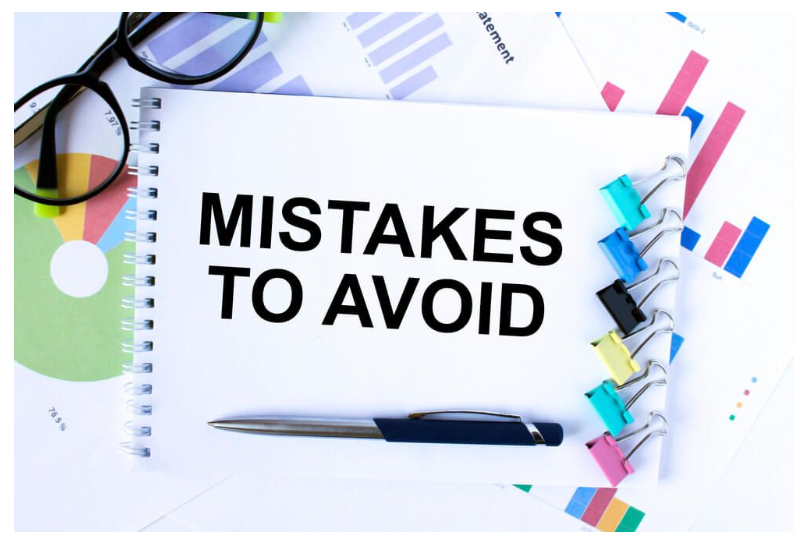
Common mistakes to avoid
When it comes to content attribution, businesses should avoid several common mistakes. These include:
- Failing to cite sources properly: Not correctly citing sources is a common mistake that can lead to accusations of plagiarism and damage your credibility. Always take the time to cite your sources using a consistent citation style properly.
- Relying on a single attribution model: Relying on a single attribution model, such as last-click attribution, can lead to inaccurate data and misguided decision-making. Use a multi-touch attribution model to gain a more comprehensive understanding of the various touchpoints that contribute to the success of a piece of content.
- Assuming touchpoints are equally important: Not all touchpoints are created equal, and taking that each touchpoint is equally essential can lead to inaccurate data and misguided decision-making. Instead, assign credit based on user behavior and each touchpoint’s impact on the user’s journey.
- Failing to review and optimize attribution: Attribution models should be periodically reviewed and optimized to ensure accuracy and effectiveness. Failure to do so can result in outdated and inaccurate data, leading to misguided decision-making.
- Ignoring the ethical implications of content attribution: Content attribution has ethical implications, and businesses should prioritize transparency, privacy, and data security when implementing a content attribution strategy. Ignoring these ethical considerations can damage your reputation and lead to legal issues.
By avoiding these common mistakes, businesses can ensure that they are correctly attributing their content and gaining valuable insights into their marketing performance. This can help companies to optimize their marketing strategies and create more compelling content that resonates with their audience.
Tools and resources to aid in content attribution
There are several tools and resources available to aid in content attribution. These include
- Analytics tools: Analytics tools, such as Google Analytics or Adobe Analytics, track user behavior and gather data on touchpoints, attribution models, and conversion goals. These tools provide businesses with the data to implement an effective content attribution strategy.
- Attribution modeling software: Attribution modeling software, such as Google Attribution or LeadsRx, can help businesses analyze and optimize their attribution models. These tools use machine learning algorithms to analyze user behavior and assign credit to touchpoints along the user’s journey.
- Plagiarism checkers: Plagiarism checkers like Turnitin or Grammarly can help businesses ensure their content is original and properly attributed. These tools scan content for potential plagiarism and provide suggestions for improving attribution.
- Citation generators: Citation generators, such as EasyBib or Citation Machine, can help businesses create appropriately formatted citations for their sources. These tools save time and ensure that authorities are consistent and accurate.
- Industry associations and standards: Industry associations and standards, such as the Interactive Advertising Bureau (IAB) or the Digital Analytics Association (DAA), provide guidelines and best practices for content attribution. These resources can help businesses ensure that they are implementing an effective and ethical attribution strategy.
By utilizing these tools and resources, businesses can ensure that they are correctly attributing their content and gaining valuable insights into their marketing performance. This can help companies to optimize their marketing strategies and create more compelling content that resonates with their audience.
Guidelines for different types of content (text, images, videos, etc.)
The guidelines for content attribution can vary depending on the type of content being used. Here are some general guidelines for different types of content:
- Text content: When using text content, such as quotes or information from another source, appropriately attribute the source. This includes providing the author’s name, the work’s title, and the publication date and using a consistent citation style.
- Images: When using images from another source, obtain permission or use images licensed for commercial use. Provide proper attribution by including the photographer’s name or the source of the image.
- Videos: When using videos from another source, obtain permission or use videos licensed for commercial use. Provide proper attribution by including the creator’s name or the start of the video.
- Audio content: When using audio content, such as music or sound effects, be sure to obtain permission or use content licensed for commercial use. Provide proper attribution by including the artist’s name or the source of the audio content.
- Social media content: When using content from social media platforms, such as tweets or Instagram posts, be sure to obtain permission or use publicly available content. Provide proper attribution by including the creator’s name or the source of the social media content.
Obtaining permission or using content licensed for commercial use when using content from other sources is essential. Proper attribution should be given to the creator or source of the content, using a consistent citation style. By following these guidelines, businesses can ensure that they are creating ethical and credible content that respects the intellectual property rights of others.

Challenges of Content Attribution
Content attribution can be complex and challenging, with several key challenges that businesses may face. These challenges include:
- Data fragmentation: Data on user behavior and touchpoints can be fragmented across multiple channels and platforms, making it difficult to track and attribute correctly.
- Lack of standardized metrics: A standardized set of metrics for content attribution can make comparing and analyzing data across different channels and touchpoints easier.
- Attribution bias: Attribution bias can occur when businesses assign credit to touchpoints that may not have played a significant role in the user’s journey. This can result in inaccurate data and misguided decision-making.
- Limited visibility: Businesses may need more visibility into user behavior and touchpoints, mainly using third-party platforms or services.
- Complexity: Content attribution can be complex and time-consuming, requiring businesses to analyze large amounts of data and implement sophisticated attribution models.
Content attribution can be challenging, requiring businesses to overcome several key challenges. By using analytics tools, adopting a data-driven approach, and focusing on transparency and accuracy, companies can overcome these challenges and implement an effective content attribution strategy that delivers valuable insights into their marketing performance.
Difficulty in identifying sources
Identifying sources can be a challenge when it comes to content attribution. This can occur when content has been shared and reposted across multiple platforms and channels, making it difficult to determine the source.
To overcome this challenge, businesses can take several steps:
- Use reverse image search: If you are using an image and are unsure of the source, use a reverse image search tool such as Google Images or TinEye. This can help you identify the start of the image and ensure that you appropriately attribute it.
- Use metadata: Metadata, such as author and publication information, can be embedded in some types of content. This can help you identify the source of the content and correctly attribute it.
- Verify sources: When in doubt, verify the start of the content. This can be done by reaching out to the author or publisher of the content or by using fact-checking tools and services.
- Prioritize transparency: Prioritizing transparency in your content attribution strategy can help mitigate the risk of incorrectly attributing content. Be clear about your sources and provide proper attribution whenever possible.
Identifying sources can be a challenge when it comes to content attribution. Still, businesses can take steps to overcome this challenge by using reverse image search, metadata, verifying sources, and prioritizing transparency. By doing so, companies can ensure that they correctly attribute their content and avoid potential legal and ethical issues.
Misinformation and fake news
Misinformation and fake news can be significant challenges regarding content attribution. Misinformation refers to false or inaccurate information spread unintentionally, while fake news refers to intentionally false or misleading information for political or financial gain.
To avoid spreading misinformation and fake news, businesses should take several steps:
- Verify sources: Always verify the source of the content before using it. This can be done by fact-checking the information, checking the head’s credibility, and verifying that the content is not intentionally misleading.
- Use trusted sources: Use trusted sources for your content, such as reputable news outlets or industry associations. These sources are more likely to provide accurate and credible information.
- Fact-check information: Fact-check all information used in your content to ensure that it is accurate and not intentionally misleading. This includes verifying statistics, quotes, and other information used in your content.
- Be transparent: Be transparent about the sources used in your content and provide proper attribution whenever possible. This helps establish credibility and transparency with your audience.
- Monitor and update content: Monitor your content regularly to avoid spreading misinformation or fake news. Update your content if new information becomes available or if errors are identified.
Businesses should prioritize accuracy and credibility in their content attribution strategy to avoid spreading misinformation and fake news. Companies can create ethical and credible content that resonates with their audience by using trusted sources, fact-checking information, being transparent about origins, and monitoring content regularly.

Cultural differences in attribution practices
Cultural differences can affect attribution practices, particularly regarding how credit is assigned and recognized. In some cultures, the individual is emphasized over the collective, while in others, the collective is emphasized over the individual. This can affect how attribution is assigned and recognized, with some cultures highlighting individual credit and others on collective recognition.
For example, in Western cultures, individual credit is often emphasized, with attribution assigned to specific individuals for their contributions. In contrast, the collective distinction is noted in some Eastern cultures, with attribution assigned to the group or organization as a whole rather than to specific individuals.
Additionally, different cultures may have different norms and expectations around attribution. For example, in some cultures, it may be considered rude or inappropriate to take credit for one’s accomplishments, while in others, it may be expected to highlight individual achievements.
These cultural differences can challenge businesses operating globally, particularly regarding content attribution. To navigate these differences, companies should be aware of the cultural norms and expectations around attribution in different regions and adapt their attribution practices accordingly.
This may involve individual credit in some cultures and collective recognition in others. Ultimately, businesses should prioritize transparency, accuracy, and respect for intellectual property rights while being sensitive to cultural differences and norms.
Conclusion
Final thoughts on how to properly attribute content
Properly attributing content is essential for creating ethical and credible content, and it requires a combination of best practices, tools, and cultural sensitivity. To properly attribute content, businesses should:
Use a multi-touch attribution model that assigns credit based on user behavior and touchpoints.
Cite sources using a consistent citation style, including the author’s name, the title of the work, and the publication date.
Use tools and resources like analytics tools, citation generators, and plagiarism checkers to aid in content attribution.
Be transparent about data collection, usage, and analysis, and prioritize privacy and security.
Adapt attribution practices to cultural differences and norms, prioritizing accuracy and respect for intellectual property rights.
By following these guidelines, businesses can create ethical and credible content that demonstrates their expertise and knowledge while respecting the intellectual property rights of others. Proper attribution can also provide valuable insights into marketing performance, helping businesses optimize their marketing strategies and create compelling content that resonates with their audience.
FAQs
What is plagiarism?
Plagiarism is using someone else’s work or ideas and presenting them as your own without giving proper credit or attribution to the original author or creator. This can include copying text, images, videos, or other types of content from another source without permission or proper attribution.
Plagiarism is considered unethical and can result in legal and professional consequences. Businesses must avoid plagiarism and adequately attribute their sources to ensure ethical and credible content.
What are the consequences of plagiarism?
The consequences of plagiarism can be significant in terms of legal and professional repercussions. Some of the effects of plagiarism include the following:
- Legal action: Plagiarism can result in legal action, including copyright infringement lawsuits and damages claims. This can be costly and time-consuming for businesses.
- Loss of credibility: Plagiarism can damage the credibility of the business and its reputation, leading to a loss of trust from customers and stakeholders.
- Professional consequences: Plagiarism can result in professional products, such as job loss or the loss of professional licenses or certifications.
- Academic consequences: In educational settings, plagiarism can result in failing grades, suspension, or expulsion from the institution.
- Damage to intellectual property rights: Plagiarism can damage the intellectual property rights of the original author or creator, which can have financial and professional consequences for them as well.
The consequences of plagiarism can be severe, and businesses need to take steps to avoid plagiarism and adequately attribute their sources to ensure ethical and credible content.

How can I check for plagiarism in my work?
There are several tools available to check for plagiarism in your work. Some of the most commonly used tools include:
- Turnitin: Turnitin is a widely used plagiarism checker that checks submitted work against a database of millions of sources, including academic journals, websites, and publications. It highlights any areas of potential plagiarism and provides a similarity score.
- Grammarly: Grammarly is a popular writing tool with a plagiarism checker feature. It scans text for potential plagiarism by checking against a database of billions of web pages and academic papers.
- Copyscape: Copyscape is a plagiarism checker that scans text for potential plagiarism by checking against a database of web pages and other online content.
- Plagiarism Checker X: Plagiarism Checker X is a software program that checks the text for potential plagiarism by comparing it against a database of millions of sources.
- Quetext: Quetext is a plagiarism checker that checks text against a database of sources, including academic journals and publications.
When using a plagiarism checker, it is essential to remember that these tools are not foolproof and may not catch every instance of plagiarism. It is also important to correctly attribute your sources and avoid unintentional plagiarism using proper citation practices.
How can I avoid accidental plagiarism?
To avoid accidental plagiarism, there are several steps you can take:
- Use proper citation practices: Proper citation practices include citing your sources accurately and consistently using a citation styles guide, such as MLA or APA. Be sure to include in-text citations for direct quotes and paraphrased material.
- Take thorough notes: When researching and writing, take detailed notes and keep track of your sources. This can help you avoid unintentional plagiarism by appropriately attributing all sources used in your work.
- Paraphrase properly: If you need to include information from another source, paraphrase it in your own words and include a proper citation. Avoid copying and pasting text directly from another source.
- Use plagiarism checkers: Use plagiarism checkers to scan your work for potential plagiarism. This can help you identify unintentional plagiarism and ensure your work is properly attributed.
- Seek permission: If you want to use a substantial amount of someone else’s work, seek permission from the original author or publisher to avoid any potential issues with plagiarism.
By following these steps, you can avoid accidental plagiarism and create ethical and credible content that respects the intellectual property rights of others.
How do I properly cite sources in academic writing?
Properly citing sources in academic writing is essential for avoiding plagiarism and providing credibility to your work. Here are some general guidelines for citing sources in academic writing:
- Choose a citation style: The most commonly used citation styles for academic writing include MLA, APA, and Chicago. Choose the type that is appropriate for your discipline and follow its guidelines.
- Include in-text citations: Include an in-text citation when using information or ideas from a source. This should include the author’s last name and the page number(s) where the data can be found.
- Include a bibliography or works cited page: At the end of your paper, include a bibliography, or works cited page that lists all sources used in your work. This should include the author’s name, the work’s title, publication information, and any other relevant information based on the citation style used.
- Follow the proper citation format: Follow the appropriate citation format for your chosen citation style, including the placement of commas, italics, and other formatting details.
- Use citation generators: Use citation generators or reference management software to help you format your citations correctly.
Proper citation is an essential part of academic writing, requiring attention to detail and adherence to citation style guidelines. You can avoid plagiarism and demonstrate credibility by properly citing your sources.

